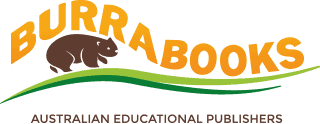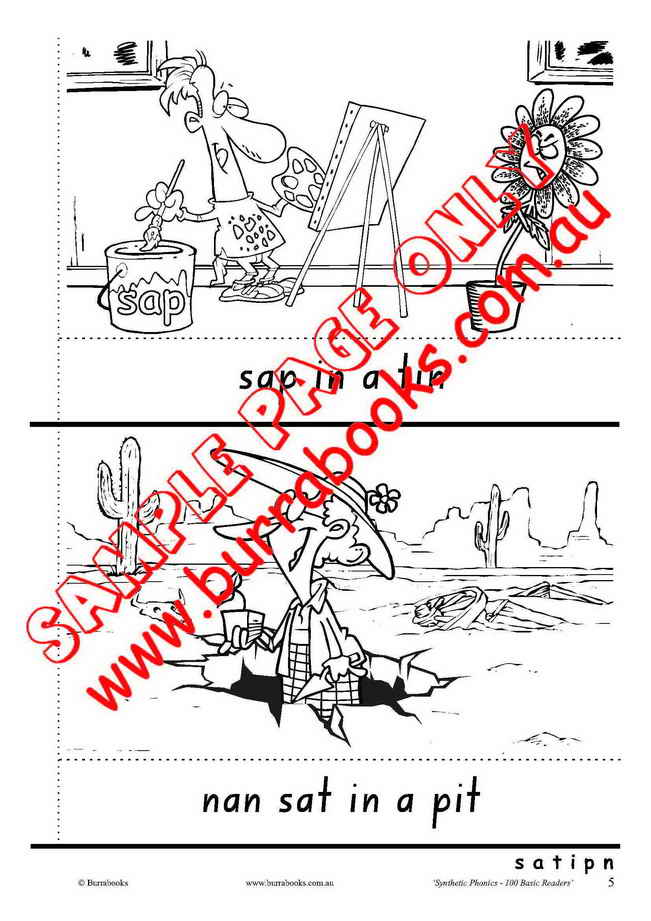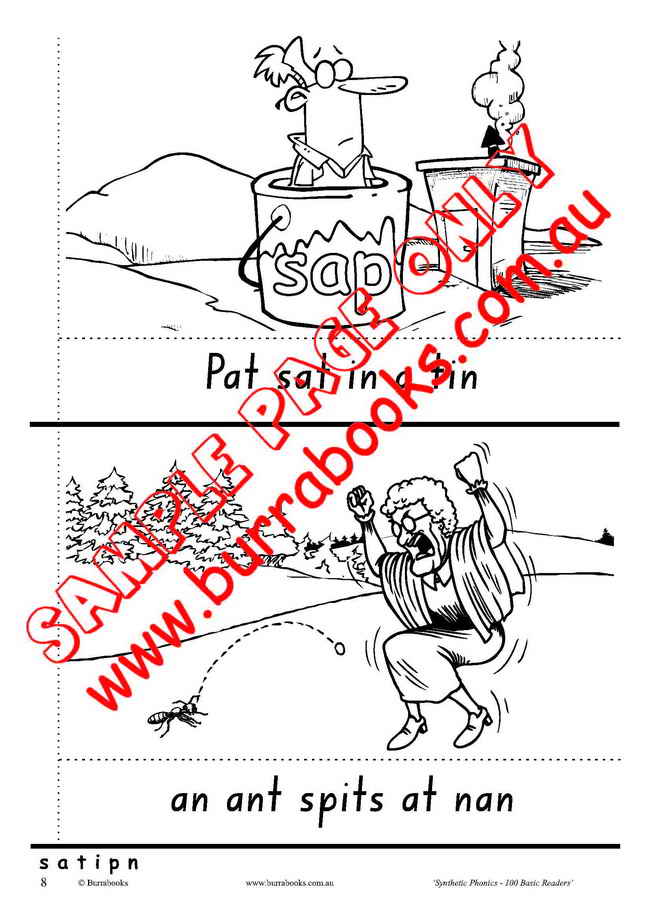Synthetic Phonics – 100 Basic Readers provides photocopiable readers which are designed to compliment the sounds taught in Synthetic Phonics – 42 Basic Sounds. These readers will enable the students to practice reading in context in a fun and interesting way.
As each group of six sounds is taught, there are readers provided which use words formed from these sounds as well as sounds learnt in previous weeks.
The readers also use some of the early tricky words or sight words which are taught (see Synthetic Phonics – 60 Tricky Words).
Word lists are shown at the end of each section which list all of the words used in the readers in that section. These could be copied onto flashcards and used during any spare moments.
A selection of reader covers are provided at the back of the book. These can be coloured in and glued or stapled to the front of the student’s reader.
To assemble the readers the students need to colour in the pictures, cut along the two heavy black lines and then glue or staple the pages together.
The readers can then be used in class or taken home to practice reading with parents.
Apart from making readers the pages could also be used as a matching activity. The students cut across the two dark lines and also the dotted lines. They can then shuffle the sentences and match them to the correct picture. Alternatively the students could be given the sentences to paste onto some paper and then draw their own pictures to illustrate the sentences.
Capital letters are not used except for the word ‘I’ and people’s names. Capital letters are introduced gradually later on after the students are able to make immediate sound/symbol relationships and have developed more fluency and confidence in their reading skills. To expect the students to recognise both lower and upper case symbols for each letter (and when to use them and the sounds associated with them) would be too difficult at this stage. Capital letters should be referred to incidentally by having them on a wall chart or pointing out that on the worksheets people’s names (like their own) start with capital letters.
There are 378 individual reader pages in this book. Using the cover pages, a teacher can make 126 different 4 page readers (comprising three reader pages and a cover) for each student. By reusing some reader pages for revision, thousands of readers can be made.
These photocopiable readers will provide a progressive opportunity for the students to practice the phonics skill they are developing.


















Reviews
There are no reviews yet